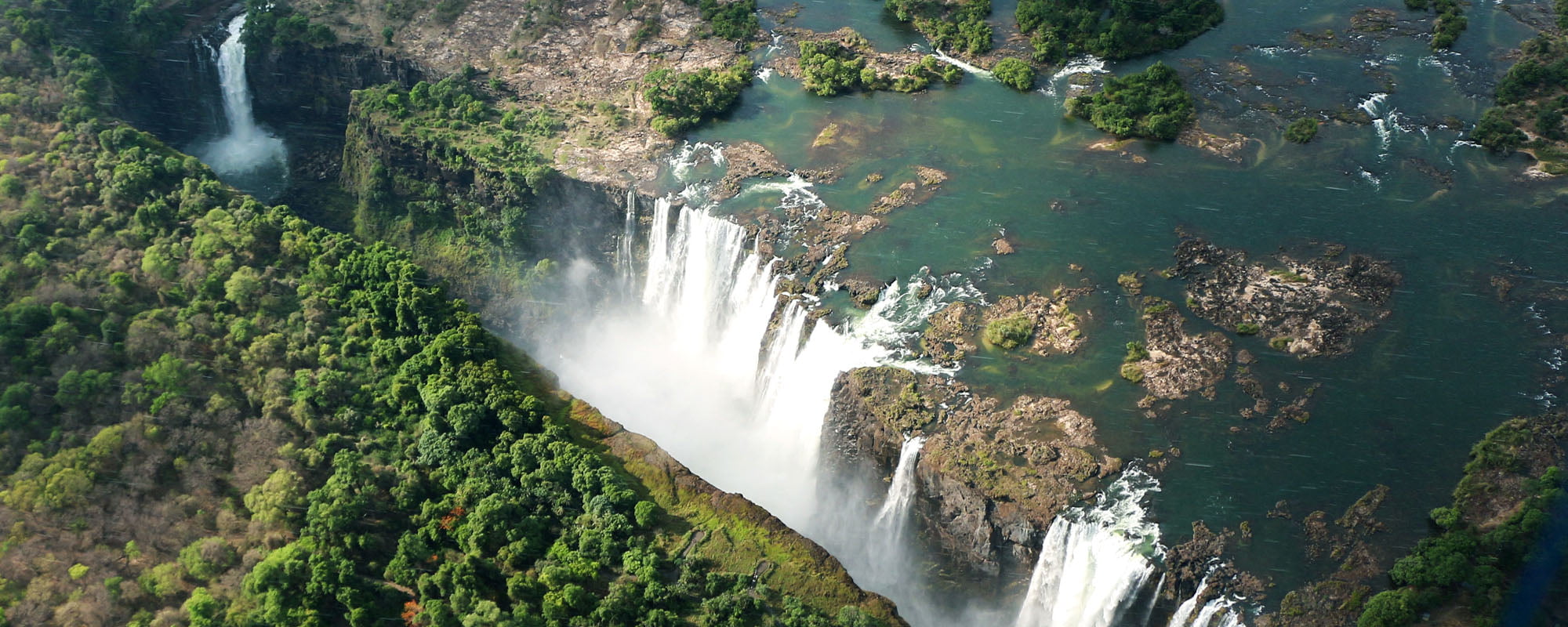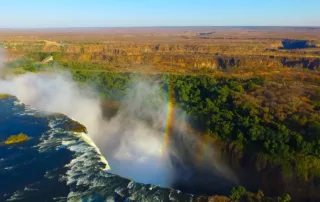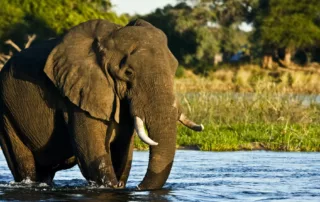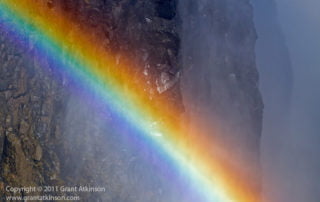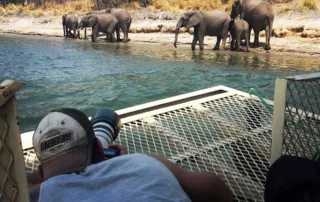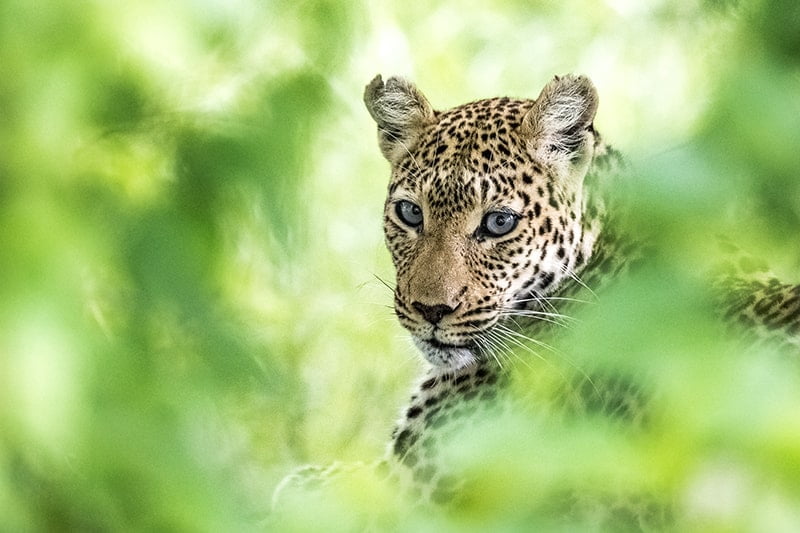Victoria Falls
A GUIDE FOR PHOTOGRAPHERS
Victoria Falls is designated as one of The Seven Natural Wonders of The World and a World Heritage Site and quite rightly so. Mosi-oa-Tunya – The Smoke that Thunders (as it is known locally) sits on the border between Zambia and Zimbabwe and was “discovered” by David Livingstone in late 1855 and duly dedicated to his regent of the time Queen Victoria.
Although not the largest waterfall in the world tt is reputed to have the largest curtain of falling water at its most thunderous peak in April and May as the floods from the upper Zambezi and Chobe reach this critical juncture on their way down to the Mozambique Channel and the Indian Ocean.
Photographic Highlights
A tour of Victoria Falls on foot: Along the Zimbabwean side of Victoria Falls there is a footpath that runs along the whole length and affords great views of the water falling towards you. With the mist generated a rainbow often forms making for an amazing composition.
It is important to note that although the largest flow of water is in April and May this can be so thunderous and generate so much spray that it is difficult to see the whole falls. In addition, the spray can compromise even the most weather sealed cameras. We always advise taking a waterproof bag to cover your gear at the mosts misty parts.
During a full moon, and the conditions are right, the falls open on a couple of nights to allow photographers to try and capture a “moonbow” in the mist.
The view from the Zambian Side: The view from the Zambian side of Victoria Falls is very different as the water is falling away from your viewpoint. One advantage is that you can get a closer view and photographic vantage point of the water falling into the gorge below. This especially easy to do when you book a lunch or high tea on Livingstone Island but be aware that this is not an option when in full flood.
Photo Safari Activities at Victoria Falls
Flight of the Angels
One of the best ways to capture the whole of Victoria Falls is from the Air and its possible to book either a 15 or 25-minute ride in a helicopter which circles both sides. Each flight takes four passengers.
One person sits in the front next to the pilot and three in the back so make sure to grab yourself a window seat and don’t get stuck in the middle of the back three.
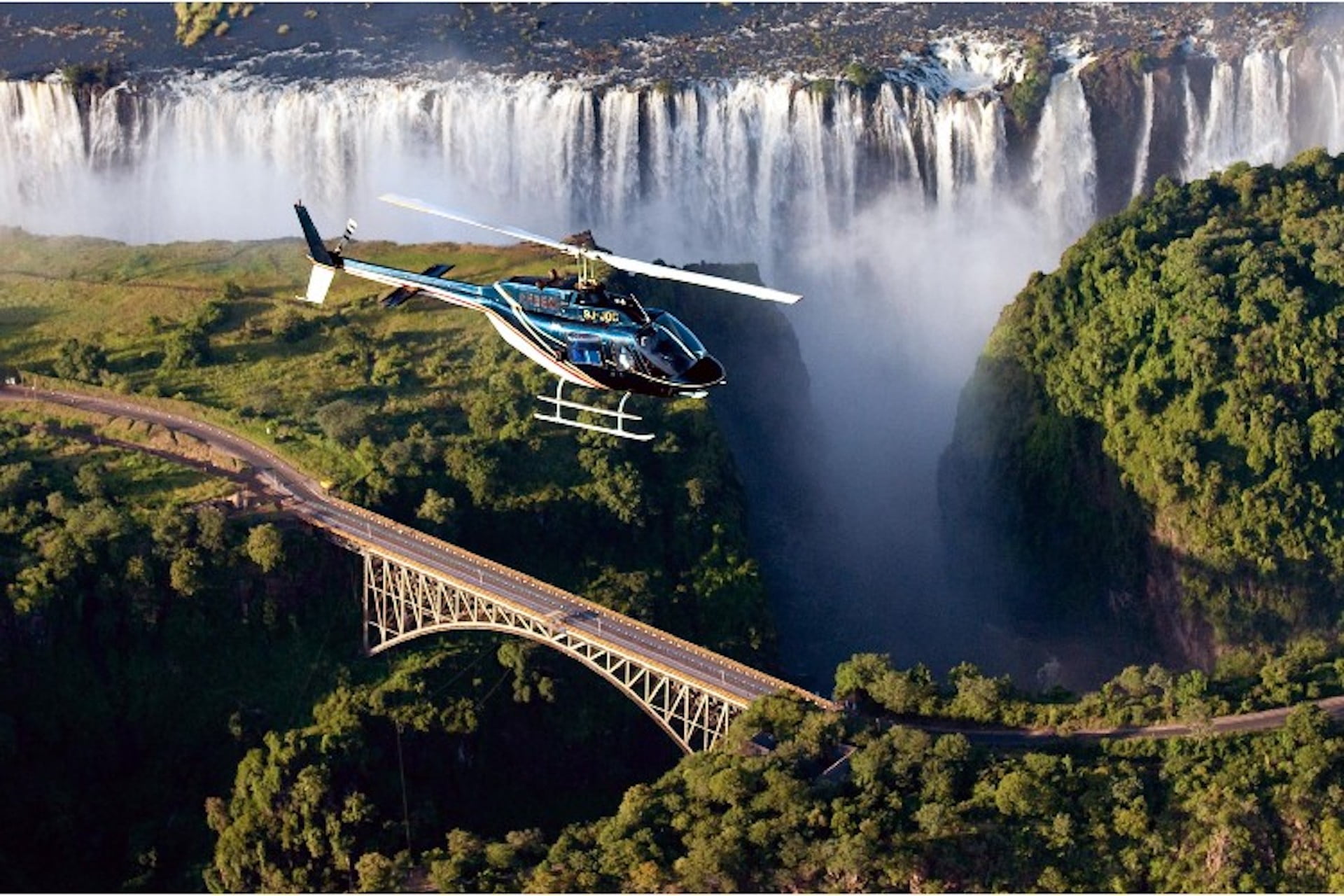
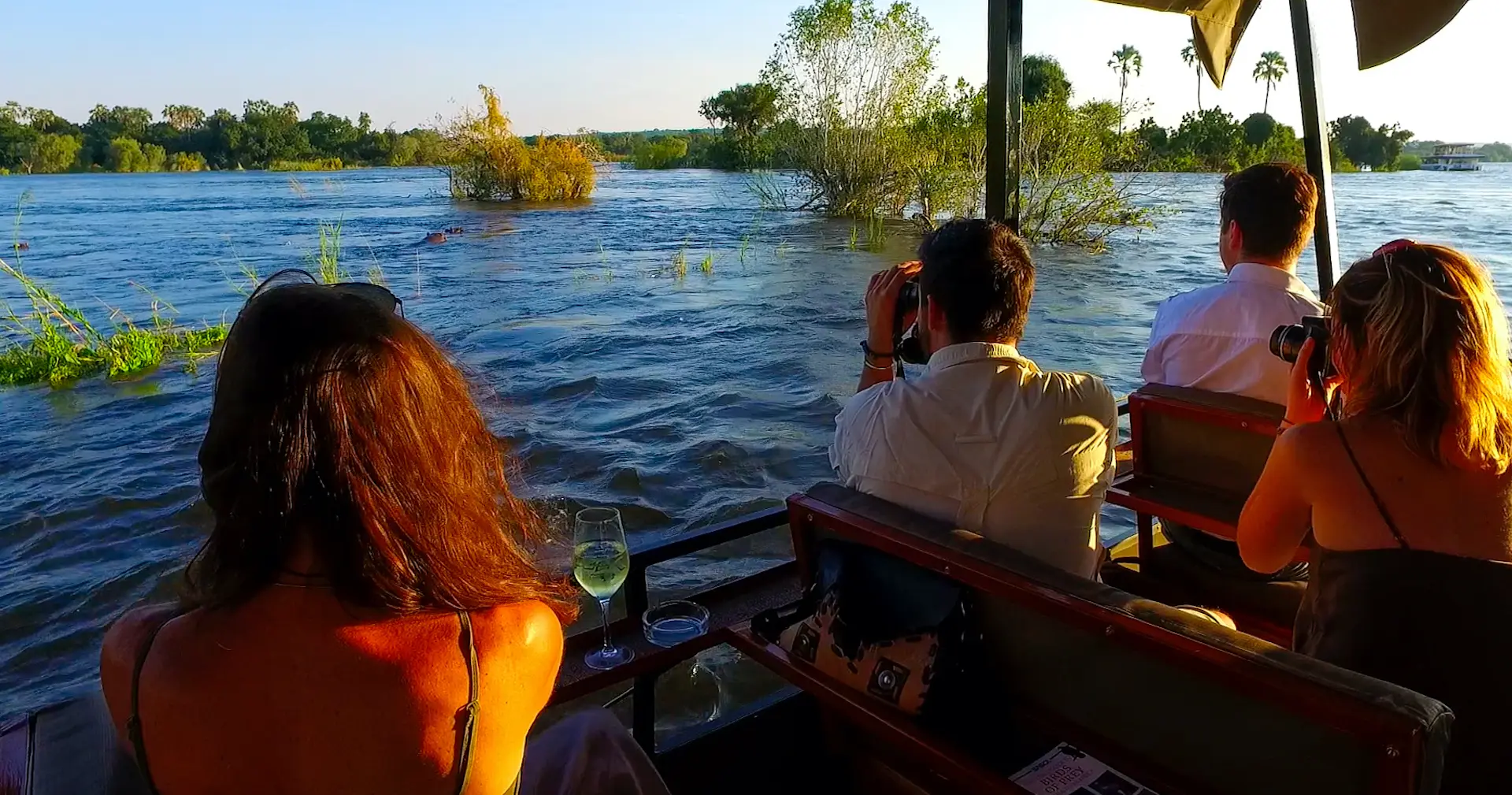
Sunset Cruise on the Zambezi
All the hotels and lodges that we work with can organise this activity but we would highly recommend a private boat so that you can explore more of the river above Victoria Falls rather than being on a larger tourist boat.
On these cruises, you can get some great birding shots as well as elephants coming to drink if you are lucky.
More Info
Both sides of the Zambezi River, just before Victoria Falls, is designated as National Parks by Zambia and Zimbabwe. Although both are devoid of big cats, as far as we know, they are nice to visit if you have time for a game drive to get your photographic eye in. We tend to recommend lodges and camps on the Zimbabwean side, like Old Drift Lodge, as the Victoria Falls National Park has a higher animal density.
There are good populations of Hippo and Crocodile in the river as you would imagine and the birdlife along the banks is fantastic.
There are plenty of elephants, although not in the density of Chobe, as well as larger mammals like giraffe, zebra and antelope.
When you get closer to the falls the vegetation takes on more of a rainforest feel nurtured by the spray from the water.
As mentioned before Victoria Falls sits in between the towns of Livingstone (Zambia) and Victoria Falls (Zimbabwe) with the water falling from Zambia towards Zimbabwe.
The water originates from several sources, predominantly in the Angolan Highlands. Around 60kms from The Falls, the Chobe River meets The Zambezi River contributing to its water mass before plunging over the edge.
Much was made about the particularly low flow over Victoria Falls seen in late 2019 dry season when rumours were rife of it drying up completely. This, as with most tabloid reporting, was a little premature as the floods we saw in May and June 2020 were some of the largest we have witnessed in ten years of operation in the region.
Air
Victoria Falls Airport is becoming a very important hub these days with more and more international carriers flying there as well as those that connect via Johannesburg, South Africa. For more information on these routes, you can read our post about it here.
Land
Victoria Falls is actually very close to The Chobe in Botswana with a travel time of around 1.5 hours. This means that arriving or departing from Victoria Falls makes getting to The Pangolin Chobe Hotel and Pangolin Voyager very easy.
It is also close enough to do a day trip from The Chobe as an alternative to having to stay there as an additional destination.
With Victoria Falls being a great add-on to The Chobe, which is in our opinion a great year-round photo destination, then there is no bad time to visit Victoria Falls. If you want to see the falls with plenty of water then march and Early April are good as are the months after the flood in June and July.

